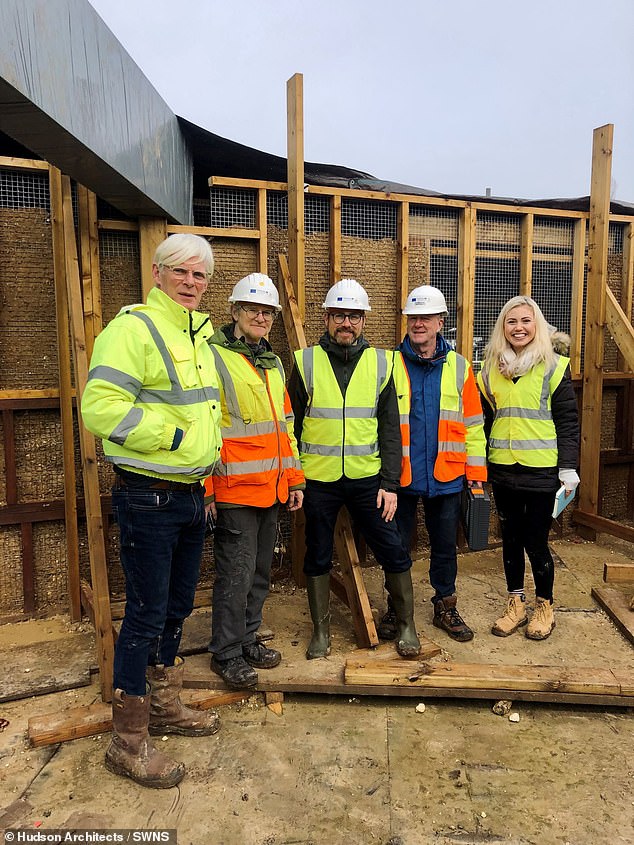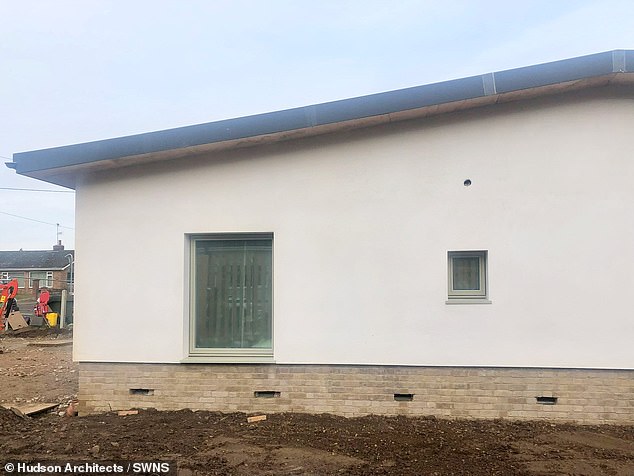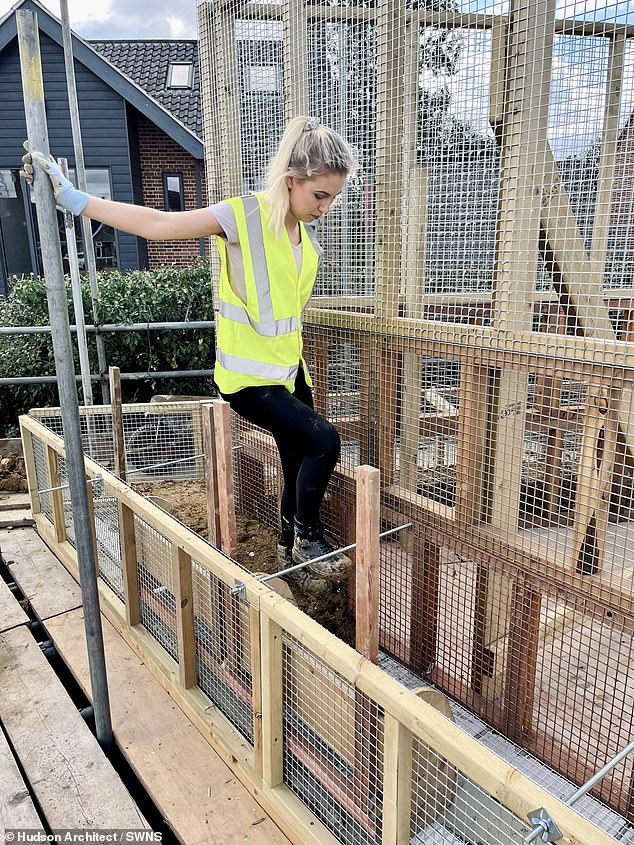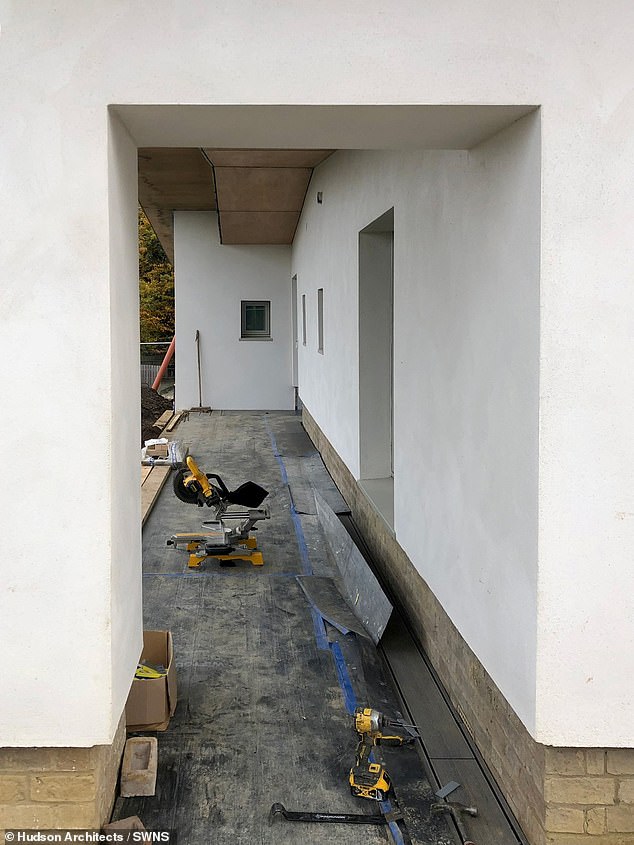Britain’s first modern house made using straw, water and mud could hit the market after being built as part of a drive for energy efficiency
The first modern British house to use straw and mud has been built as part of a project to build more energy efficient homes.
The first CobBauge building in Britain was built in January by local builders Grocott and Murfit following a four-year project by Hudson Architects.
The walls in the CobBauge house in Fakenham, Norfolk, are made of hemp straw, water and earth (or mud), known as Cob.
With the new technology, the walls can be thermally insulated according to modern standards.
Architect Anthony Hudson used an ancient construction method consisting of the basic materials to build a bungalow that meets modern building codes.
The property has large triple glazed windows facing south for solar energy in winter and an air source heat pump provides heating.
The first CobBauge building in Britain was built in January by local builders Grocott and Murfit following a four-year project by Hudson Architects

The property has large triple glazed windows facing south for solar energy in winter and an air source heat pump provides heating. Pictured: The front of the completed house in Norfolk

The walls in the CobBauge house in Fakenham, Norfolk, are made of hemp straw, water and earth (or mud), known as Cob. Pictured: Anthony Hudson on the far left

Mud is one of the most durable building materials. Some Cob buildings date back more than 500 years, but were replaced by modern methods in the 19th century

The first CobBauge building in Britain was built in January by local builders Grocott and Murfit following a four-year project by Hudson Architects
It is part of an EU-funded project to bring clay construction into the 21st century, with a focus on low-carbon construction as the first cob building to receive complaints.
After the EU announced it was looking for architects to come up with new ways to use earth in homes, 68-year-old Hudson jumped at the opportunity.
He said: ‘The challenge was to create a house using earth as the primary building material, but which could also be thermally insulated.
‘Earth is a very sustainable way to build, especially as it is so widely available here in the UK.
‘The problem is that to make it an effective insulator you usually have to make the walls incredibly thick, which is impractical.’
Although there is still some way to go before mud houses can be brought to the mainstream market, Mr Hudson is confident that houses will become the new normal.
He said: ‘Although the materials are cheap and easy to obtain, the construction method is very time-consuming.
‘Currently everything has to be done by hand, which means labor costs are high.
“Our next step, though, is to figure out how we can refabricate buildings to reduce that.
“Once we figure that out, I think this will be a very attractive method.”
Mr. Hudson and his team decided to combine pure corn cobs to create structural integrity and thermally insulated soil.
The green roof will support biodiversity and compensate for the loss of green space on the site.
A three-bedroom Cob house can be built for as little as £20,000, but the cost of Hudson Architect’s project is currently unknown.

A three-bedroom Cob house can be built for as little as £20,000, but the cost of Hudson Architect’s project is currently unknown

An artist’s impression of what the flask house would look like
Mud is one of the most durable building materials. Some Cob buildings date back more than 500 years, but were replaced by modern methods in the 19th century.
An open day will be held for the mud house in Fakenham, Norfolk in March.
In 2011, Devon builder Kevin McCabe wanted to create a 10,000-square-foot house out of corn cobs, but the project was postponed due to issues such as bad weather.
When it was finished, heating the corn house cost nothing, but Mr McCabe admitted he had exhausted his original budget of £350,000 and did not know how much his total was.
